Campomelic Dysplasia
Campomelic dysplasia is a rare lethal disorder characterized by bowing of long bones of the lower extremities, an enlarged and elongated skull with a peculiar small facies, and hypoplastic scapulae. This disorder is related to a single mutation in the SOX-9 gene located at 17q24, an SRY-related gene. An apparent preponderance of females with this condition is due to 46,XY male with sex reversal.
Incidence: Approximately 1 in 110,000 births.
Sonographic findings:
Fig 1, Fig 2, Fig 3
- Bowing, sometimes angulation, of the femur and tibia.
- Hypoplastic or absent fibulae is commonly seen.
- Other tubular bones are normal in length.
- Bell-shaped narrow thorax.
- Hypoplastic scapulae.
- Normal bone echogenicity.
- Occasional associated deformities: clubfeet, micrognathia, pyelectasis, and ventriculomegaly.
- 3D ultrasound may provide information supplementary to that provided by 2D ultrasound for early diagnosis.
- The main differential diagnoses include any cause with bowing long bones such as thanatophoric dysplasia, and variants of osteogenesis imperfecta.
- Pitfalls: A variant of the same entity disorder may show no bowed limbs, a so-called acampomelic campomelic dysplasia.
- Usually diagnosed in the second half of pregnancy.
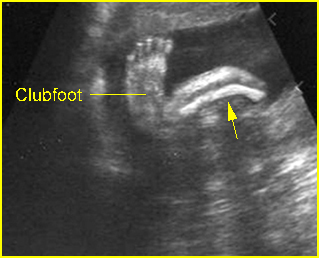
Fig 1: Campomelic dysplasia Longitudinal scan of tibia: anterior bowing of well ossified tibia
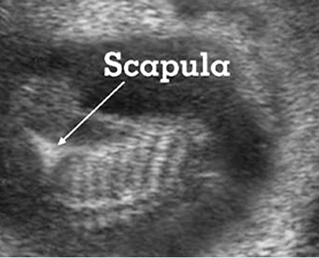
Fig 2: Hypoplastic scapula Coronal scan of the scapula: scapula hypoplasia of the fetus with campomelic syndrome
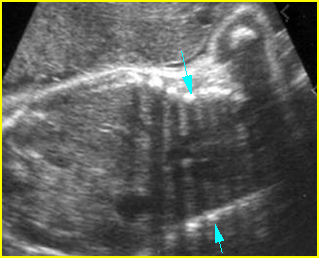
Fig 3: Small thorax Coronal scan of fetal trunk: disproportion of thorax (arrow) and abdomen size of the fetus with campomelic dysplasia
Video clips of campomelic dysplasia
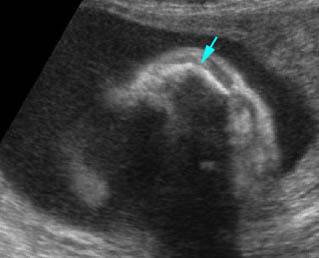
Campomelia : Anterior bowing of the tibia o (arrow)
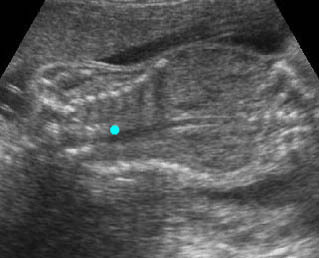
Campomelia : Coronal scan of the trunk:: markedly small thorax (solid circle)
Associations: Rare, several non-specific anomalies such as micrognathia, hydronephrosis and cardiac defects.
Management: Termination of pregnancy can be offered.
Prognosis: Lethal in most cases.
Recurrence risk: The majority of cases are caused by new mutations, therefore, the recurrence risk is rare.

